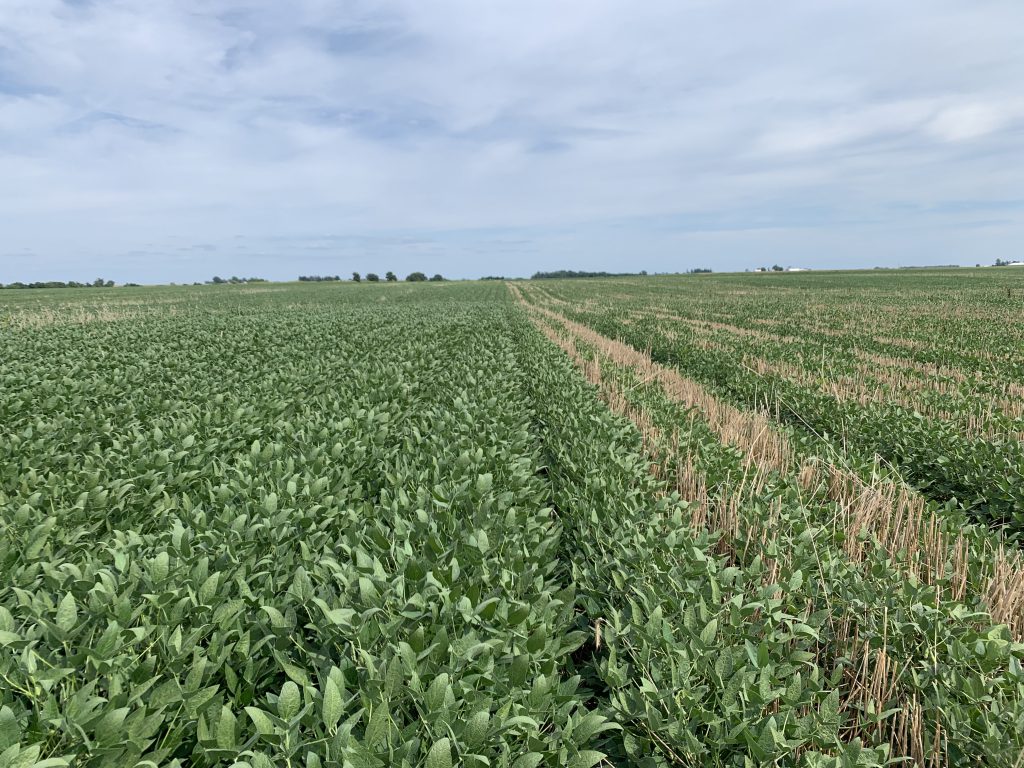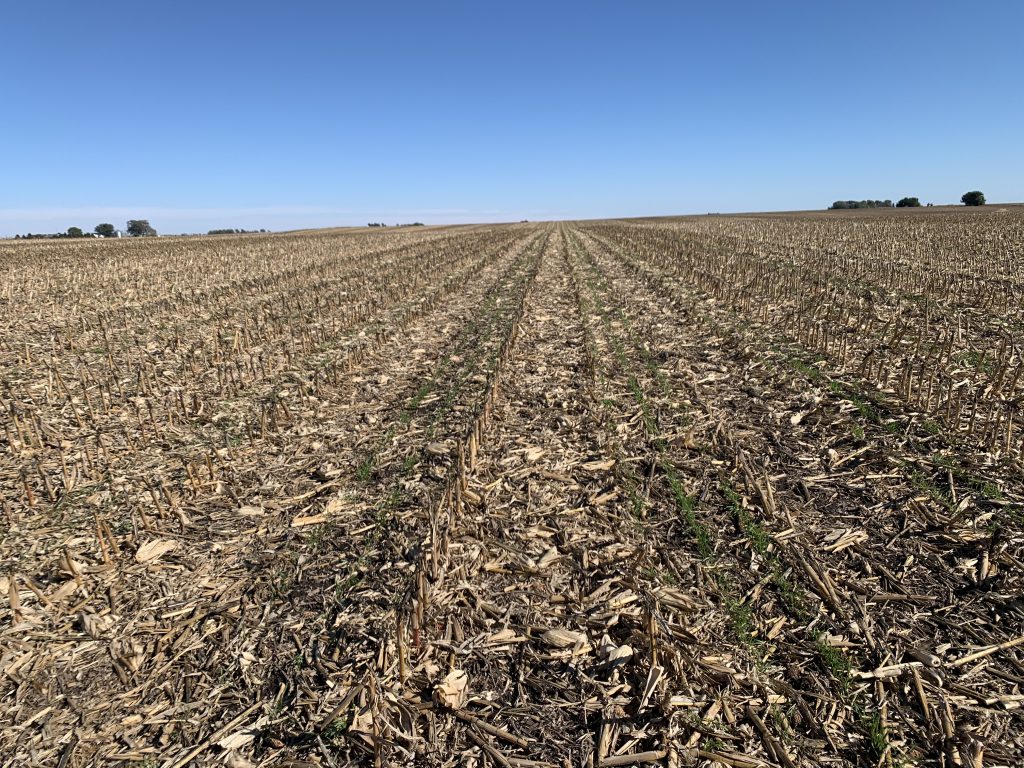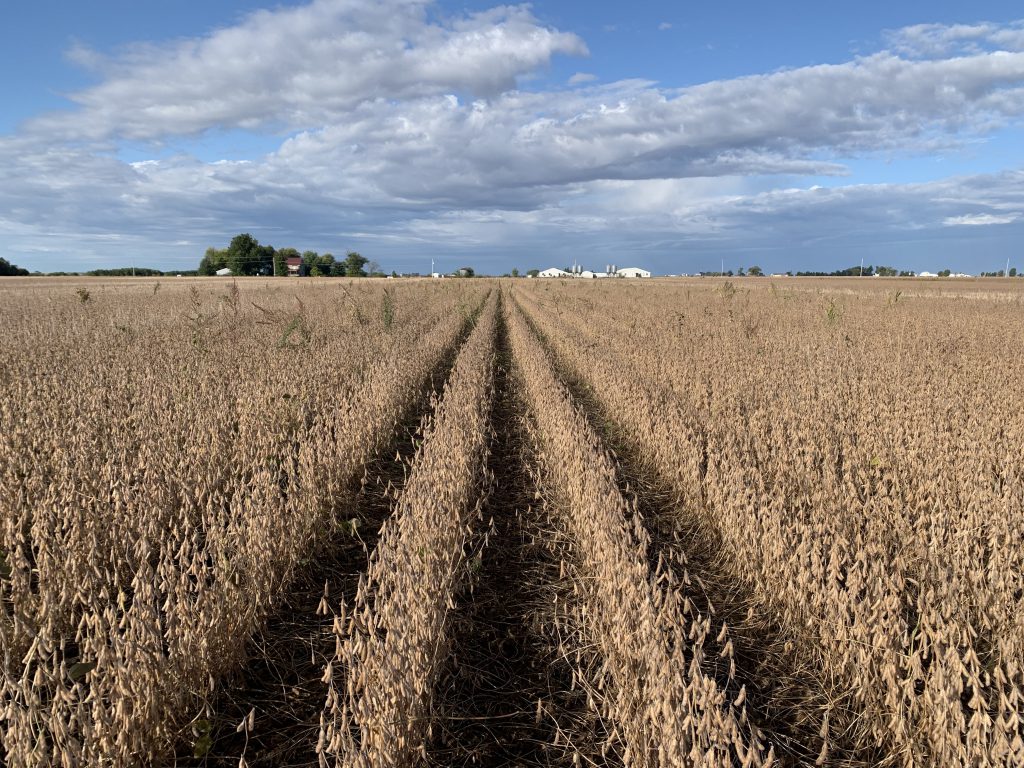
The 2021 growing season produced some of the highest soybean yields Michael Vittetoe has ever seen. He farms with his parents and sister in Washington County, which was hammered with rain early in the season. But then the spigot turned off and temperatures soared during the grain fill period. Variable weather is one of the reasons he uses 4R Plus practices – to weatherproof soil.
The crop caught a nice 2-inch rain in August that was “probably a lifesaver,” he said. But he’s always looking for areas to improve.

The 2021 season was the second year he relay cropped beans, and those fields averaged 63 bushels per acre. Vittetoe says the relay rye is worth roughly 13 to 14 bushels of soybeans, which results in a “pretty good number of 76 or 77 bushels per acre.” He’s happy with the progress he’s making, as that’s just under the 79.5 bushels per acre the check strips yielded.
Vittetoe hopes to shore up both the rye and soybean aspects of relay cropping for next season. “There are a lot of things we can do better, and we still came in just below the best beans we’ve ever grown. That gives me hope our relay cropping will consistently improve,” he said.
Mechanical rolling of rye saved on inputs
Vittetoe was particularly pleased with the nearly 80 bushels-per-acre check strips, given that no chemicals were used to kill the rye. Rather than chemically terminating the check strips and then rolling, he waited a bit longer and used his homemade in-row roller to terminate the rye.

Doing so took two passes with the roller, but Vittetoe was pleased with the results and only had one herbicide pass on those acres. One of the check strips had no herbicide applied and still yielded 80 bushels per acre with very little weed pressure, all things considered.
But again, Vittetoe, formerly a civil engineer, is looking to further improve the dynamic system. He’s working to make his in-row roller capable of mechanically terminating the rye in just one pass.
“Even with GMO traits on soybeans, they still have to metabolize the chemicals. If we can avoid spraying chemicals while the soybeans are flowering, that’ll be better in the long run,” he commented.
Improving nutrient efficiencies

Vittetoe says corn yields were highly variable but averaged near the farm’s actual production history. “I try not to simply blame the variability on the wet weather early in the season. I’m trying to be more proactive and figure out what we can do to come up with a solution, regardless of what happens with the weather,” he commented. That’s a common theme when it comes to his farming decisions.
The disappointing corn crop provided a good yield map of wet spots in the fields, showing where nutrient management is needed, according to Vittetoe. As of late October, he was working to stabilize the nitrogen in fall-applied hog manure with humic acid.
Weed control provided by cover crops can provide quick ROI
The obvious reason for cover crops and other 4R Plus soil health practices is erosion control and improved water infiltration. But from a more immediate standpoint, Vittetoe suggests producers consider cover crops as a way to cut input costs and control weeds.
“We utilize cereal rye ahead of soybeans to reduce chemical costs by eliminating residual herbicides. This reduces expenses by greater margins than the cost of the cover crop. So that’s how we’re paying for it. The weed control aspect is where it has the ability to pay off in year one,” Vittetoe said.
Learn more about Vittetoe’s family farm by subscribing to his YouTube channel. You can also look into the Multi-Cropping Iowa initiative here.
